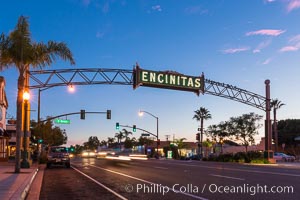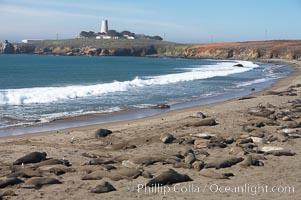
Elephant seals crowd a sand beach at the Piedras Blancas rookery near San Simeon. The Piedras Blancas lighthouse is visible in upper left.
Location: Piedras Blancas, San Simeon, California
Image ID: 20355
Location: Piedras Blancas, San Simeon, California
Image ID: 20355
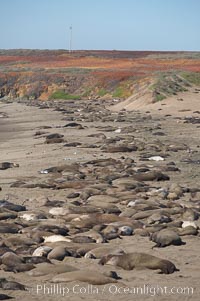
Elephant seals crowd a sand beach at the Piedras Blancas rookery near San Simeon.
Location: Piedras Blancas, San Simeon, California
Image ID: 20358
Location: Piedras Blancas, San Simeon, California
Image ID: 20358
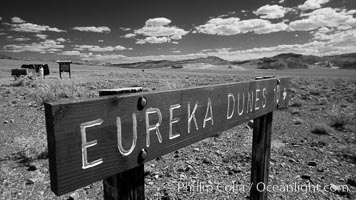
Sign to Eureka Dunes and Eureka Valley.
Location: Eureka Valley, Death Valley National Park, California
Image ID: 25389
Location: Eureka Valley, Death Valley National Park, California
Image ID: 25389
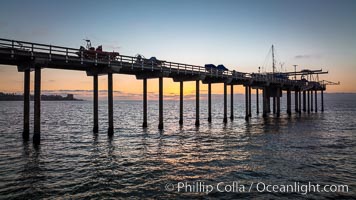
SIO Pier. The Scripps Institution of Oceanography research pier is 1090 feet long and was built of reinforced concrete in 1988, replacing the original wooden pier built in 1915. The Scripps Pier is home to a variety of sensing equipment above and below water that collects various oceanographic data. The Scripps research diving facility is located at the foot of the pier. Fresh seawater is pumped from the pier to the many tanks and facilities of SIO, including the Birch Aquarium. The Scripps Pier is named in honor of Ellen Browning Scripps, the most significant donor and benefactor of the Institution.
Location: Scripps Institution of Oceanography, La Jolla, California
Image ID: 38023
Location: Scripps Institution of Oceanography, La Jolla, California
Image ID: 38023
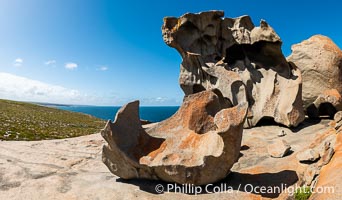
Remarkable Rocks Panoramic Photo. It took 500 million years for rain, wind and surf to erode these rocks into their current form. They are a signature part of Flinders Chase National Park on Kangaroo Island, South Australia.
Location: Flinders Chase National Park, Kangaroo Island, South Australia
Image ID: 39262
Location: Flinders Chase National Park, Kangaroo Island, South Australia
Image ID: 39262
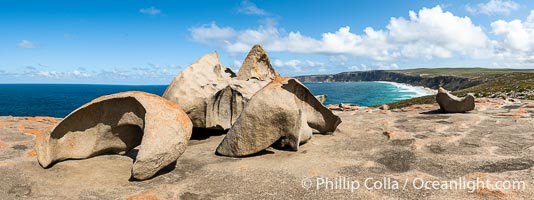
Remarkable Rocks Panoramic Photo. It took 500 million years for rain, wind and surf to erode these rocks into their current form. They are a signature part of Flinders Chase National Park on Kangaroo Island, South Australia.
Location: Flinders Chase National Park, Kangaroo Island, South Australia
Image ID: 39263
Panorama dimensions: 200 x 534
Location: Flinders Chase National Park, Kangaroo Island, South Australia
Image ID: 39263
Panorama dimensions: 200 x 534
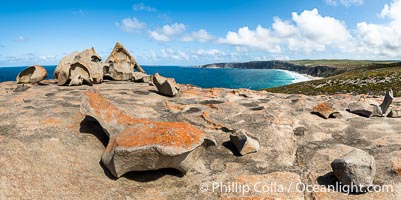
Remarkable Rocks Panoramic Photo. It took 500 million years for rain, wind and surf to erode these rocks into their current form. They are a signature part of Flinders Chase National Park on Kangaroo Island, South Australia.
Location: Flinders Chase National Park, Kangaroo Island, South Australia
Image ID: 39264
Location: Flinders Chase National Park, Kangaroo Island, South Australia
Image ID: 39264
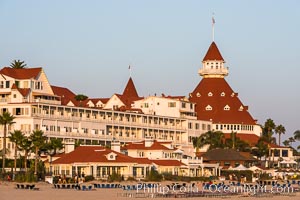
Hotel del Coronado, known affectionately as the Hotel Del. It was once the largest hotel in the world, and is one of the few remaining wooden Victorian beach resorts. It sits on the beach on Coronado Island, seen here with downtown San Diego in the distance. It is widely considered to be one of Americas most beautiful and classic hotels. Built in 1888, it was designated a National Historic Landmark in 1977.
Location: San Diego, California
Image ID: 29419
Location: San Diego, California
Image ID: 29419
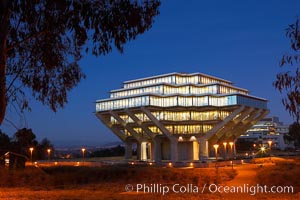
UCSD Library glows at sunset (Geisel Library, UCSD Central Library).
Location: University of California, San Diego, La Jolla
Image ID: 14780
Location: University of California, San Diego, La Jolla
Image ID: 14780

Guadalupe Island at sunrise, panorama. Volcanic coastline south of Pilot Rock and Spanish Cove, near El Faro lighthouse.
Location: Guadalupe Island (Isla Guadalupe), Baja California, Mexico
Image ID: 19497
Panorama dimensions: 2797 x 16157
Location: Guadalupe Island (Isla Guadalupe), Baja California, Mexico
Image ID: 19497
Panorama dimensions: 2797 x 16157
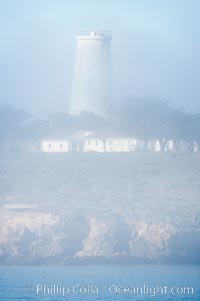
Piedras Blancas lighthouse. Completed in 1875, the 115-foot-tall Piedras Blancas lighthouse is one of the few tall-style lighthouses on the West Coast of the United States. Piedras Blancas, named for a group of three white rocks just offshore, is north of San Simeon, California very close to Hearst Castle.
Location: Piedras Blancas, San Simeon, California
Image ID: 20348
Location: Piedras Blancas, San Simeon, California
Image ID: 20348
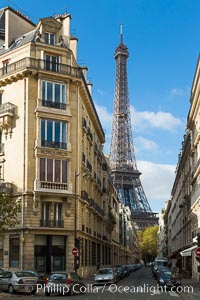
La Tour Eiffel. The Eiffel Tower is an iron lattice tower located on the Champ de Mars in Paris, named after the engineer Gustave Eiffel, who designed the tower in 1889 as the entrance arch to the 1889 World's Fair. The Eiffel tower is the tallest structure in Paris and the most-visited paid monument in the world.
Location: Tour Eiffel, Paris, France
Image ID: 28147
Location: Tour Eiffel, Paris, France
Image ID: 28147
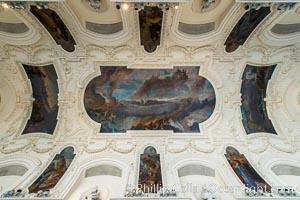
Petit Palais, (Small Palace), is a museum in Paris, France. Built for the Universal Exhibition in 1900 to Charles Girault's designs, it now houses the City of Paris Museum of Fine Arts (musee des beaux-arts de la ville de Paris).
Location: Petit Palais, Paris, France
Image ID: 28062
Location: Petit Palais, Paris, France
Image ID: 28062
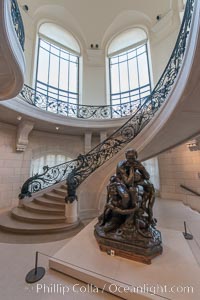
Petit Palais, (Small Palace), is a museum in Paris, France. Built for the Universal Exhibition in 1900 to Charles Girault's designs, it now houses the City of Paris Museum of Fine Arts (musee des beaux-arts de la ville de Paris).
Location: Petit Palais, Paris, France
Image ID: 28066
Location: Petit Palais, Paris, France
Image ID: 28066
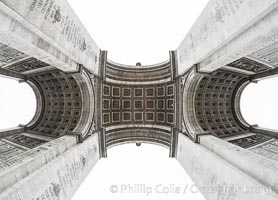
Arc de Triomphe. The Arc de Triomphe (Arc de Triomphe de l'Etoile) is one of the most famous monuments in Paris. It stands in the centre of the Place Charles de Gaulle (originally named Place de l'Etoile), at the western end of the Champs-Elysees. The Arc de Triomphe (in English: "Triumphal Arch") honors those who fought and died for France in the French Revolutionary and the Napoleonic Wars, with the names of all French victories and generals inscribed on its inner and outer surfaces. Beneath its vault lies the Tomb of the Unknown Soldier from World War I. The monument was designed by Jean Chalgrin in 1806, and its iconographic program pitted heroically nude French youths against bearded Germanic warriors in chain mail. It set the tone for public monuments, with triumphant patriotic messages. The monument stands 50 metres (164 ft) in height, 45 m (148 ft) wide and 22 m (72 ft) deep.
Location: Arc de Triomphe, Paris, France
Image ID: 28080
Panorama dimensions: 7793 x 10813
Location: Arc de Triomphe, Paris, France
Image ID: 28080
Panorama dimensions: 7793 x 10813
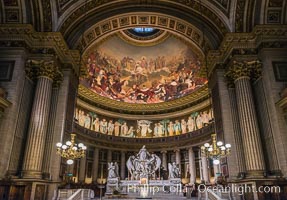
Eglise de la Madeleine, a Roman Catholic church in the 8th arrondissement of Paris, designed in its present form as a temple to the glory of Napoleon's army.
Location: Eglise de la Madeleine, Paris, France
Image ID: 28087
Location: Eglise de la Madeleine, Paris, France
Image ID: 28087
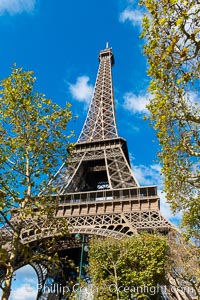
La Tour Eiffel. The Eiffel Tower is an iron lattice tower located on the Champ de Mars in Paris, named after the engineer Gustave Eiffel, who designed the tower in 1889 as the entrance arch to the 1889 World's Fair. The Eiffel tower is the tallest structure in Paris and the most-visited paid monument in the world.
Location: Tour Eiffel, Paris, France
Image ID: 28116
Location: Tour Eiffel, Paris, France
Image ID: 28116
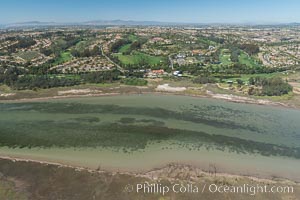
Aerial photo of Batiquitos Lagoon, Carlsbad. The Batiquitos Lagoon is a coastal wetland in southern Carlsbad, California. Part of the lagoon is designated as the Batiquitos Lagoon State Marine Conservation Area, run by the California Department of Fish and Game as a nature reserve.
Location: Carlsbad, Callifornia
Image ID: 30562
Location: Carlsbad, Callifornia
Image ID: 30562
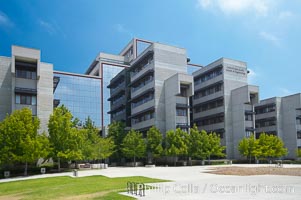
Jacobs School of Engineering building, University of California, San Diego (UCSD).
Location: University of California, San Diego, La Jolla
Image ID: 20843
Location: University of California, San Diego, La Jolla
Image ID: 20843
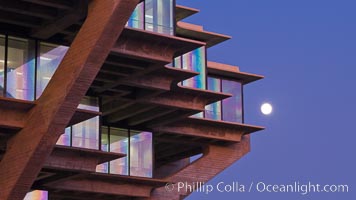
UCSD Library glows at sunset (Geisel Library, UCSD Central Library).
Location: University of California, San Diego
Image ID: 26909
Location: University of California, San Diego
Image ID: 26909
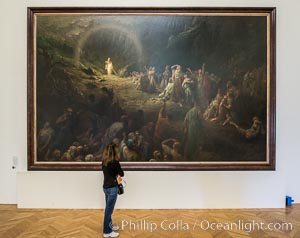
Petit Palais, (Small Palace), is a museum in Paris, France. Built for the Universal Exhibition in 1900 to Charles Girault's designs, it now houses the City of Paris Museum of Fine Arts (musee des beaux-arts de la ville de Paris).
Location: Petit Palais, Paris, France
Image ID: 28065
Location: Petit Palais, Paris, France
Image ID: 28065

Women at the Well, 1892, Paul Signac, Musee d'Orsay, Paris.
Location: Musee dOrsay, Paris, France
Image ID: 35661
Location: Musee dOrsay, Paris, France
Image ID: 35661
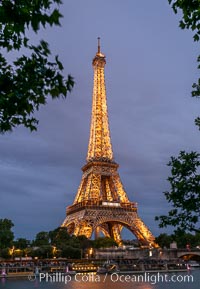
La Tour Eiffel. The Eiffel Tower is an iron lattice tower located on the Champ de Mars in Paris, named after the engineer Gustave Eiffel, who designed the tower in 1889 as the entrance arch to the 1889 World's Fair. The Eiffel tower is the tallest structure in Paris and the most-visited paid monument in the world.
Location: Tour Eiffel, Paris, France
Image ID: 35676
Location: Tour Eiffel, Paris, France
Image ID: 35676
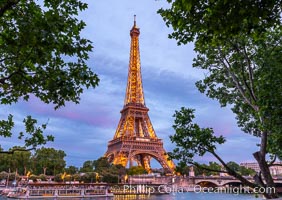
La Tour Eiffel at dusk over the River Seine in Paris France. The Eiffel Tower is an iron lattice tower located on the Champ de Mars in Paris, named after the engineer Gustave Eiffel, who designed the tower in 1889 as the entrance arch to the 1889 World's Fair. The Eiffel tower is the tallest structure in Paris and the most-visited paid monument in the world.
Location: Tour Eiffel, Paris, France
Image ID: 35677
Location: Tour Eiffel, Paris, France
Image ID: 35677
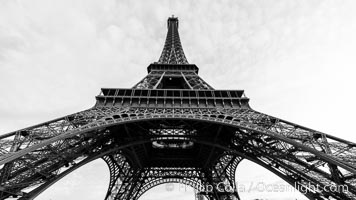
La Tour Eiffel. The Eiffel Tower is an iron lattice tower located on the Champ de Mars in Paris, named after the engineer Gustave Eiffel, who designed the tower in 1889 as the entrance arch to the 1889 World's Fair. The Eiffel tower is the tallest structure in Paris and the most-visited paid monument in the world.
Location: Tour Eiffel, Paris, France
Image ID: 35716
Location: Tour Eiffel, Paris, France
Image ID: 35716
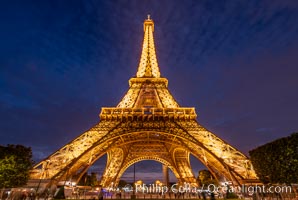
La Tour Eiffel. The Eiffel Tower is an iron lattice tower located on the Champ de Mars in Paris, named after the engineer Gustave Eiffel, who designed the tower in 1889 as the entrance arch to the 1889 World's Fair. The Eiffel tower is the tallest structure in Paris and the most-visited paid monument in the world.
Location: Tour Eiffel, Paris, France
Image ID: 35717
Location: Tour Eiffel, Paris, France
Image ID: 35717
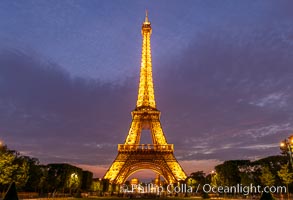
La Tour Eiffel. The Eiffel Tower is an iron lattice tower located on the Champ de Mars in Paris, named after the engineer Gustave Eiffel, who designed the tower in 1889 as the entrance arch to the 1889 World's Fair. The Eiffel tower is the tallest structure in Paris and the most-visited paid monument in the world.
Location: Tour Eiffel, Paris, France
Image ID: 35718
Location: Tour Eiffel, Paris, France
Image ID: 35718
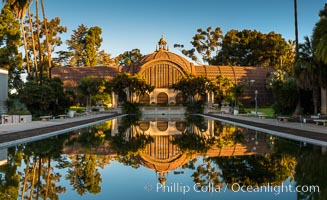
The Botanical Building in Balboa Park, San Diego. The Botanical Building, at 250 feet long by 75 feet wide and 60 feet tall, was the largest wood lath structure in the world when it was built in 1915 for the Panama-California Exposition. The Botanical Building, located on the Prado, west of the Museum of Art, contains about 2,100 permanent tropical plants along with changing seasonal flowers. The Lily Pond, just south of the Botanical Building, is an eloquent example of the use of reflecting pools to enhance architecture. The 193' by 43' foot pond and smaller companion pool were originally referred to as Las Lagunas de las Flores (The Lakes of the Flowers) and were designed as aquatic gardens. The pools contain exotic water lilies and lotus which bloom spring through fall.
Location: Balboa Park, San Diego, California
Image ID: 28824
Panorama dimensions: 6045 x 9876
Location: Balboa Park, San Diego, California
Image ID: 28824
Panorama dimensions: 6045 x 9876
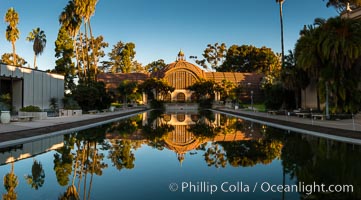
The Botanical Building in Balboa Park, San Diego. The Botanical Building, at 250 feet long by 75 feet wide and 60 feet tall, was the largest wood lath structure in the world when it was built in 1915 for the Panama-California Exposition. The Botanical Building, located on the Prado, west of the Museum of Art, contains about 2,100 permanent tropical plants along with changing seasonal flowers. The Lily Pond, just south of the Botanical Building, is an eloquent example of the use of reflecting pools to enhance architecture. The 193' by 43' foot pond and smaller companion pool were originally referred to as Las Lagunas de las Flores (The Lakes of the Flowers) and were designed as aquatic gardens. The pools contain exotic water lilies and lotus which bloom spring through fall.
Location: Balboa Park, San Diego, California
Image ID: 28825
Panorama dimensions: 6838 x 12347
Location: Balboa Park, San Diego, California
Image ID: 28825
Panorama dimensions: 6838 x 12347
